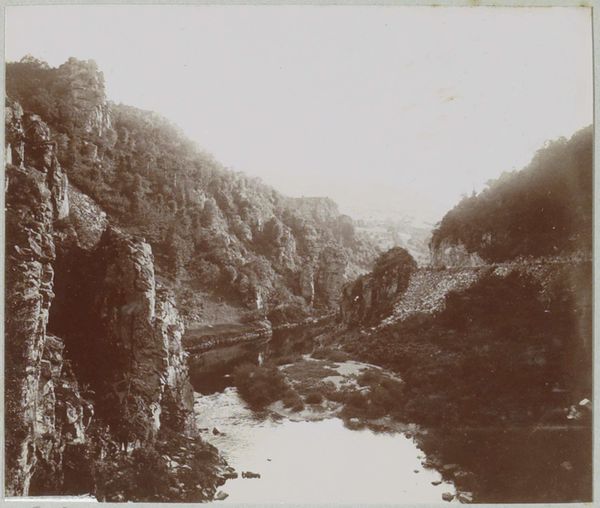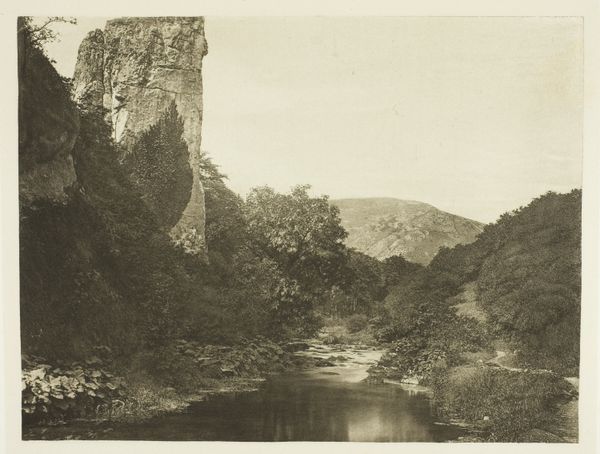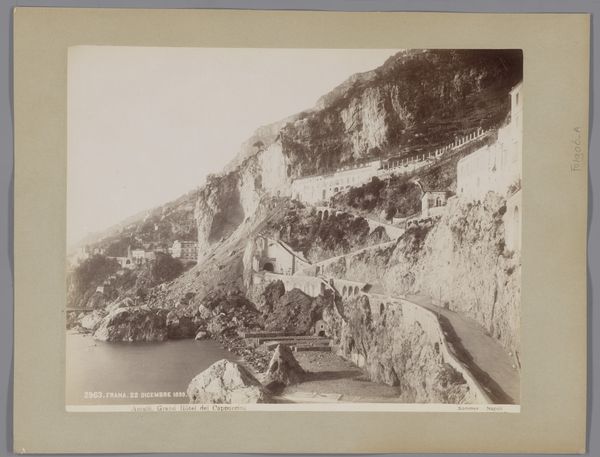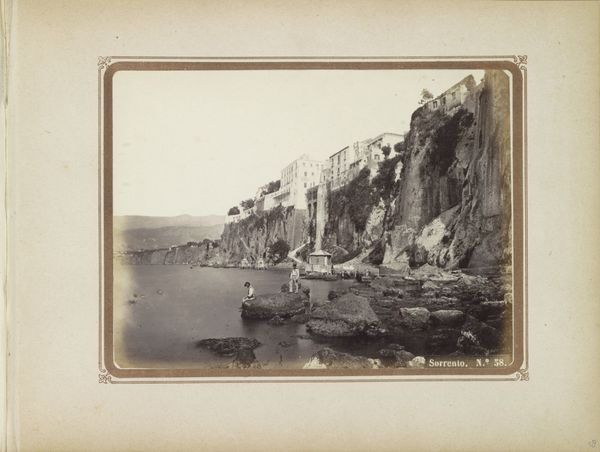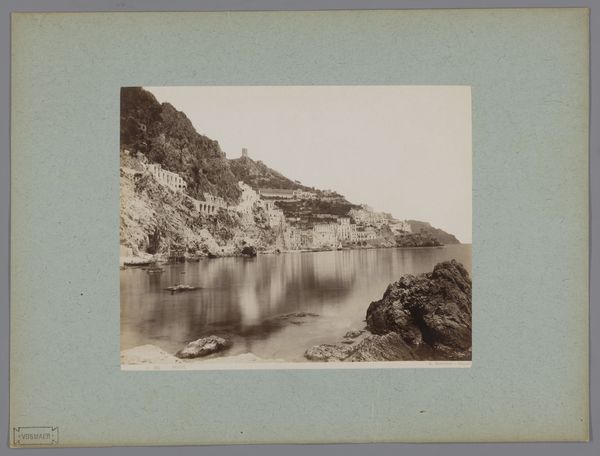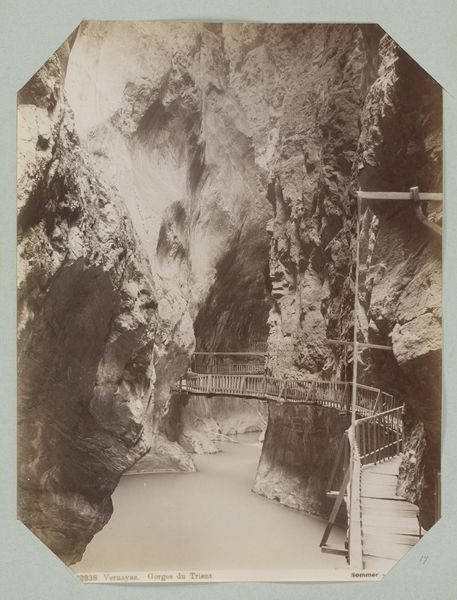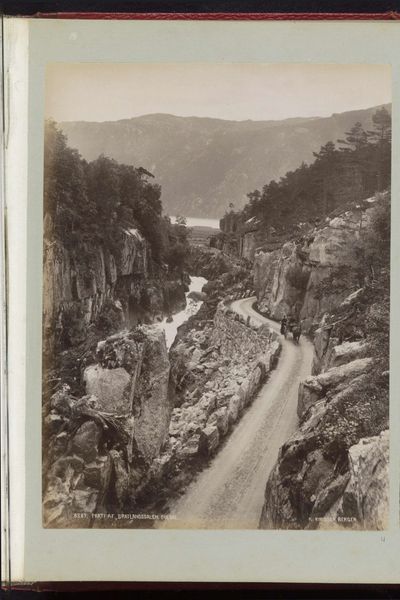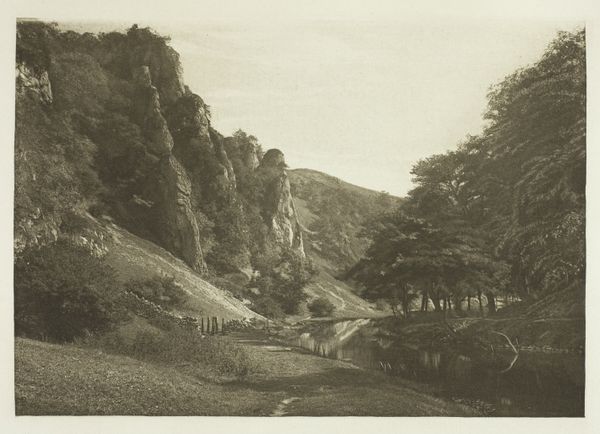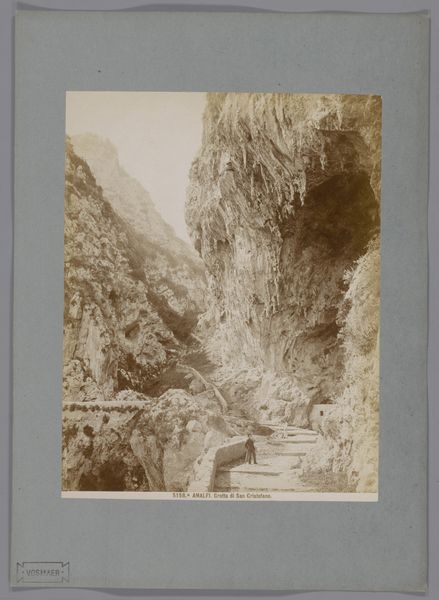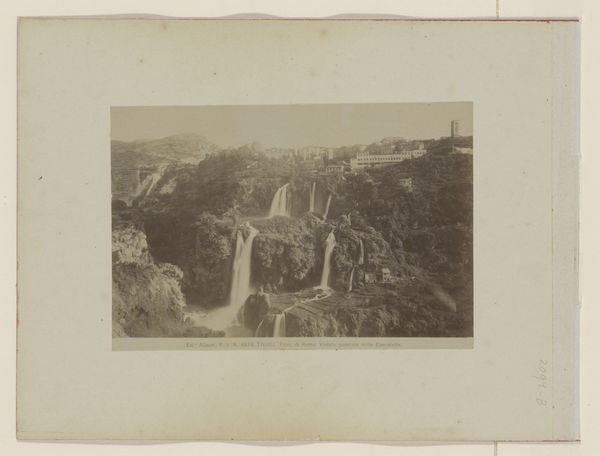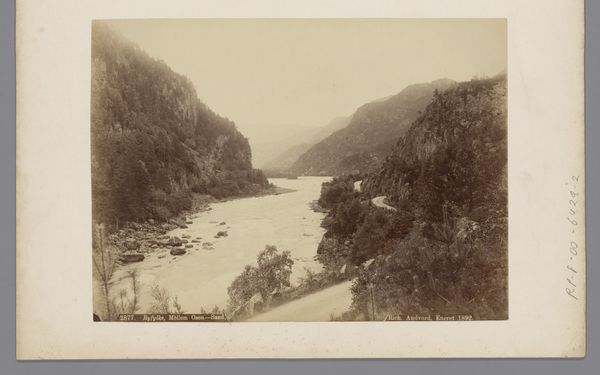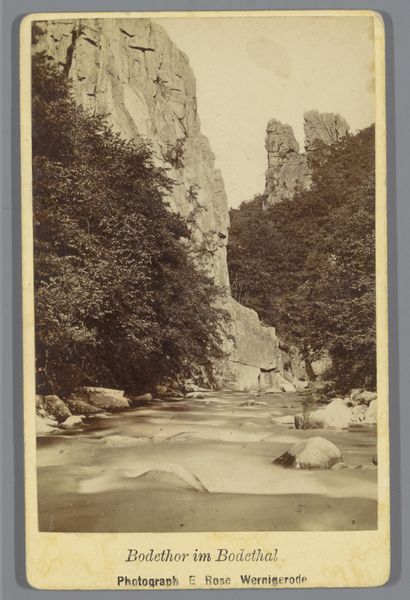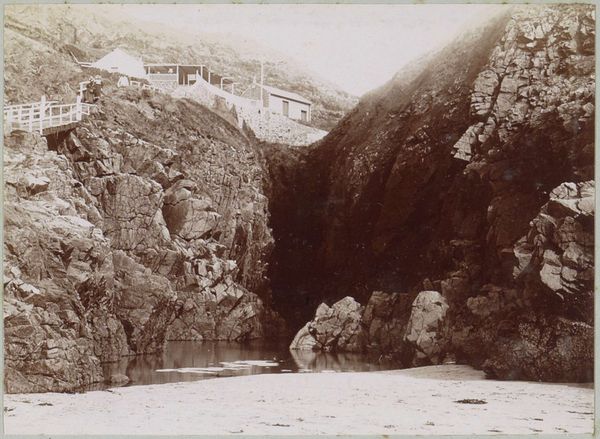
photography
#
landscape
#
river
#
german-expressionism
#
photography
#
realism
Dimensions: height 258 mm, width 355 mm
Copyright: Rijks Museum: Open Domain
Anselm Schmitz captured this photograph of the Bunte Kuh rock formation along the Ahr river in Germany, sometime during his career between 1831 and 1903. During the 19th century, landscape photography became a powerful tool for shaping perceptions of national identity and natural resources. Schmitz, working in this context, presents an image that highlights the imposing scale of the rock formation, yet also shows the marks of human intervention. The riverbank is heavily fortified, reflecting the industrial and infrastructural developments transforming the German landscape at the time. This image prompts us to consider how we engage with the natural world, and the ways in which our interactions are shaped by cultural and economic forces. The Bunte Kuh, once a symbol of untouched nature, is here presented as a site of human modification, raising questions about preservation, exploitation, and the evolving relationship between humanity and our environment. The photograph serves as a reminder of the lasting impact of industrial progress on even the most iconic natural landmarks.
Comments
No comments
Be the first to comment and join the conversation on the ultimate creative platform.
